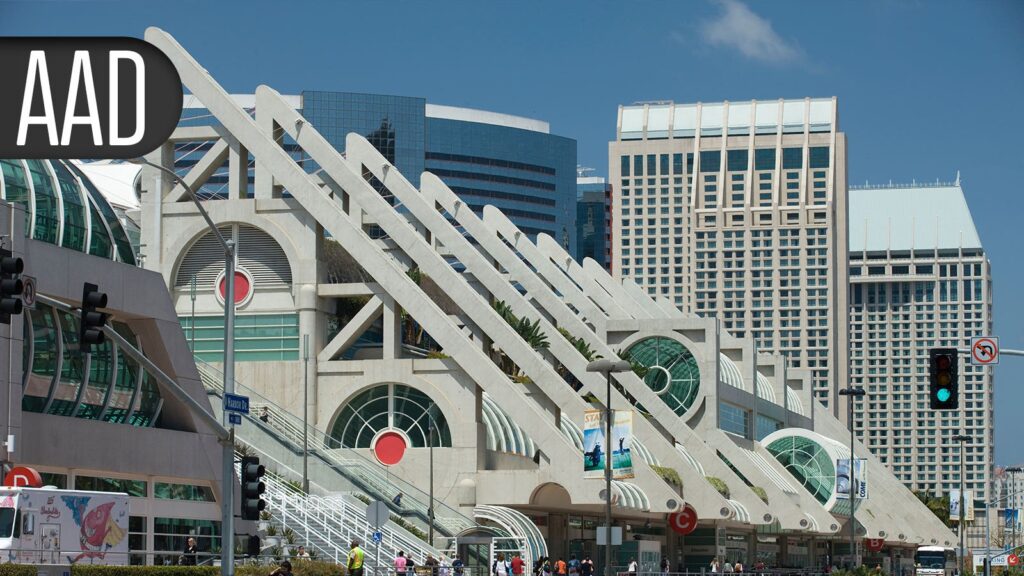SAN DIEGO — Once-daily topical therapy for small children with atopic dermatitis (AD) produced rapid improvement with good tolerability, a large randomized trial showed.
Evidence of improvement occurred within the first week of treatment with roflumilast cream 0.05%. By week 4, one-fourth of patients achieved clinical success, defined as Investigator Global Assessment (IGA) 0/1 (clear/almost clear) and a 2-point improvement from baseline. More than a third of patients met the key secondary endpoint of IGA 0/1, and almost 40% of the patients had at least 75% improvement in the Eczema Area and Severity Index (EASI 75).
The most common treatment-emergent adverse events (TEAEs) with the topical phosphodiesterase-4 (PDE4) inhibitor were application-site irritation (5.3%) and upper respiratory tract infection (4.1%), reported Lawrence Eichenfield, MD, of the University of California San Diego, at the American Academy of Dermatology meeting.
“Once-daily roflumilast 0.05% improved atopic dermatitis in patients ages 2 to 5 with improvement seen as early as 1 week and reduction in pruritus as soon as day 1,” said Eichenfield. “The profile was very consistent with what was seen with 0.15% roflumilast in a trial of 6-year-olds to adults. There have been prior presentations of the continuation study of roflumilast 0.15%, and an open-label of safety and efficacy of patients 2 to 5 years of age is ongoing.”
Session moderator Joel Gelfand, MD, of the University of Pennsylvania in Philadelphia, asked how the results compare with other topical therapies for young patients with AD.
“I’m going to give the smart answer: I don’t know,” said Eichenfield. “We haven’t had head-to-head trials — just monotherapy compared to vehicle in a specific type of patient population. I really wouldn’t know how it measures up. That’s one of the things we always deal with as we move from clinical trials to clinical practice. We have to figure out how things fit into clinical practice.”
Topical therapies for AD have limitations related to dosing frequency, tolerability, application to the face/eyelids, use on large body surface areas, and long-term treatment. Topical roflumilast is formulated as a water-based, once-daily, nonsteroidal cream or foam. The formulations contain no ethanol, propylene glycol, or fragrances that can cause irritation.
As noted, a 0.15% concentration of topical roflumilast demonstrated safety and efficacy in patients as young as 6 years, but a 0.05% formulation was developed specifically for younger patients. (A 0.3% formulation of topical roflumilast (Zoryve) was recently approved for plaque psoriasis and seborrheic dermatitis, and an oral version of the PDE4 inhibitor was approved in 2013 for chronic obstructive pulmonary disease under the trade name Daliresp.)
Eichenfield reported findings from the phase III INTEGUMENT-PED trial involving 652 patients 2-5 years old with mild or moderate AD treated with topical roflumilast 0.05%. Eligible patients had an IGA score of 2 or 3, body surface area ≥3%, and EASI score ≥5. The patients were randomized 2:1 to once-daily topical roflumilast or vehicle, and the primary endpoint was IGA success at week 4.
The patients had a mean age of 3.3 years, and the sex distribution was approximately even. Two-thirds of the patients were white, and about 16% were Black. Two-thirds of patients had Fitzpatrick skin type I-III, and the rest had type IV-VI. Half the patients had facial involvement and more than 20% had eyelid involvement.
More than half the patients had prior treatment with topical steroids, 17% had treatment with topical calcineurin inhibitors, and almost 10% had prior treatment with crisaborole (Eucrisa). Baseline characteristics included an IGA of 3 in 75-80% of the patients, median EASI of about 10, and body surface area of 15-20%.
The primary analysis showed that more than twice as many patients achieved clinical success at week 4 with roflumilast as compared with vehicle (25.4% vs 10.7%, P<0.0001). Significant between-group differences occurred at weeks 1 (9.4% vs 0.9%, P<0.0001) and 2 (21.2% vs 6.8%, P<0.0001).
For the secondary endpoint of IGA 0/1, the 4-week rates were 35.4% with roflumilast and 14.6% with vehicle (P<0.0001). The difference was statistically significant within 1 week (17% vs 3.7%, P<0.0001). The EASI 75 rates at week 4 were 39.4% with roflumilast and 20.6% with vehicle (P<0.0001), with statistically significant differences at week 1 (19.2% vs 5.2%, P<0.0001).
In the roflumilast arm, 35.4% of patients had at least a 4-point improvement from baseline in the numerical rating scale as compared with 18% in the vehicle arm (P=0.0002). The difference was statistically significant within the first week (14.9% vs 3.8%, P=0.0004).
Roflumilast was well tolerated, as 3.4% of patients had TEAEs considered treatment-related.
Disclosures
The study was supported by Arcutis Biotherapeutics.
Eichenfield and Gelfand disclosed extensive relationships with the pharmaceutical industry.
Primary Source
American Academy of Dermatology
Source Reference: Eichenfield L, et al “Efficacy and safety of once-daily roflumilast cream 0.05% in pediatric patients 2 to 5 years of age with mild to moderate atopic dermatitis (INTEGUMENT-PED): A phase III randomized controlled trial” AAD 2024; Late-Breaking Abstract.
Please enable JavaScript to view the comments powered by Disqus.
Source link : https://www.medpagetoday.com/meetingcoverage/aad/109195
Author :
Publish date : 2024-03-15 11:39:07
Copyright for syndicated content belongs to the linked Source.
